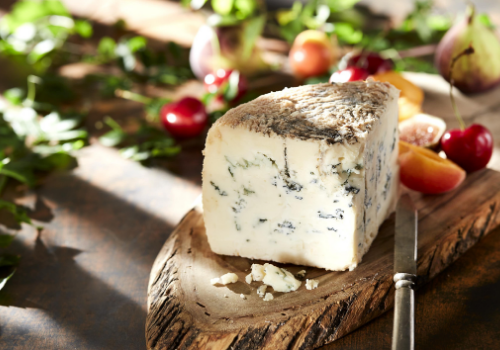Buffalo Milk 101
When it comes to milk, the U.S has been always ripe for a new trend. From alternative milks (this episode of the poignant Hulu show Ramy does a great job commenting on the phenomenon) to goat milk and the return of old-fashioned, ‘slow-pasteurized’ milk, there’s never a dull moment. 2021, cautiously, just might be the year of water buffalo milk, with more and more brands stepping into the scene and water buffalo milk products appearing in Whole Foods, top-shelf grocers and ice cream parlors nationwide. Still under the radar, water buffalo milk is one to watch. Here’s what you need to know about the emerging new milk on the block.
Origins of Buffalo Milk
Water buffalos are the cooler-looking, sturdier representatives of the bovine family. Native to regions in Asia and Africa, the domestic buffalo can also be currently found in Europe, Australia and the U.S, thanks to import procedures. Originating in India, Nepal, Indonesia and other countries where the Hindu faith traditionally prohibits cow milk, water buffalo milk has slowly made its way to other parts of the world during the last century, particularly in the mozzarella industry around the Mediterranean sea.
Buffalo Milk in the US
While some U.S retailers import water buffalo milk products, such as cheese and dulce de leche, from Europe, South America or Asia, in recent years, production of water buffalo milk has gotten a foothold in the U.S, thanks to adventurous entrepreneurs who have grown curious about the animals and their unique milk. Many producers cite milking water buffalo as a passion project, first and foremost; the process is more laborious and time-intensive than milking cows, and the products are still considered somewhat niche in the U.S. Ramini Mozzarella in Tomales, CA, established in 2008, was, arguably, the first U.S operation to successfully produce water buffalo milk, and since, creameries like Double 8 in Petaluma, CA, Riverine Ranch in Asbury, NJ, as well as a small number of other ventures, have joined the niche.
Bi-Right Creamery Soft Serve
Availability of Buffalo Milk Products
While buffalo milk cheese is easier to find, the milk is still difficult for most consumers to find. In the San Francisco Bay Area, buffalo milk features prominently in soft serve available at Tartine Manufactory, the Gott’s Roadside diner chain and Bi-Rite Creamery. Thanks to COVID-19, some manufacturers such as Riverine Ranch , who have previously worked exclusively with restaurants, started offering their products online. According to Andrew Zlot, the founder of Double 8 creamery in Petaluma, CA, which provides the soft serve mix for the restaurants, the restaurant decline has also resulted in the fact much more actual milk is available - milk that otherwise would have been processed to make cheese products.
Health Benefits of Buffalo Milk
The milk of the water buffalo is richer in fat and lower in cholesterol in comparison to cow milk, packing more calcium as well. Due to a higher activity of peroxidase, an enzyme that plays a part in various processes, it keeps fresh longer. But then, as with any new milk on the market, healthy skepticism is advised. “To claim that buffalo milk is an undiscovered fountain of youth is an exaggeration,” says Andrew Zlot. “After all, it’s just milk.”
Flavor Profile of Buffalo Milk & Buffalo Milk Cheeses
Buffalo milk cheese photo courtesy of Buf Creamery
The water buffalo milk tends to be creamier, whiter and more rounded than cow milk, yielding decadent products. “Its high butter fat makes it rich and even though it’s very expensive the yield is considerably greater than any other milk,” says Lisa Gottreich of Bohemian Creamery in Sebastopol, CA, which makes soft and soft-ripened cheese with water buffalo milk. “There’s definitely a different flavor profile - it’s slightly sweeter than your regular milk,” says Zlot. The reason the Italians prefer buffalo milk for making mozzarella is that mozzarella is a fresh cheese, so it’s difficult to augment or disguise the way the milk tastes in it.”
And if you want to incorporate buffalo milk cheese into cooking? “I find that buffalo milk has the brightness and acidity that you would normally get from goat's milk, along with the creaminess and unctuousness that would normally come from a cow's milk cheese,” says chef Joseph Humphrey from Seven Stills Brewery and Distillery, who had put a buffalo cheese-filled beignet on his menu in the past. “It offers the best of both worlds.”



